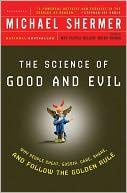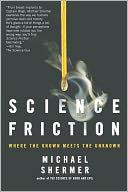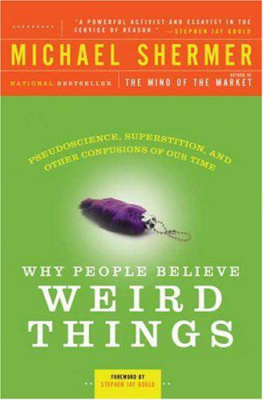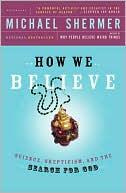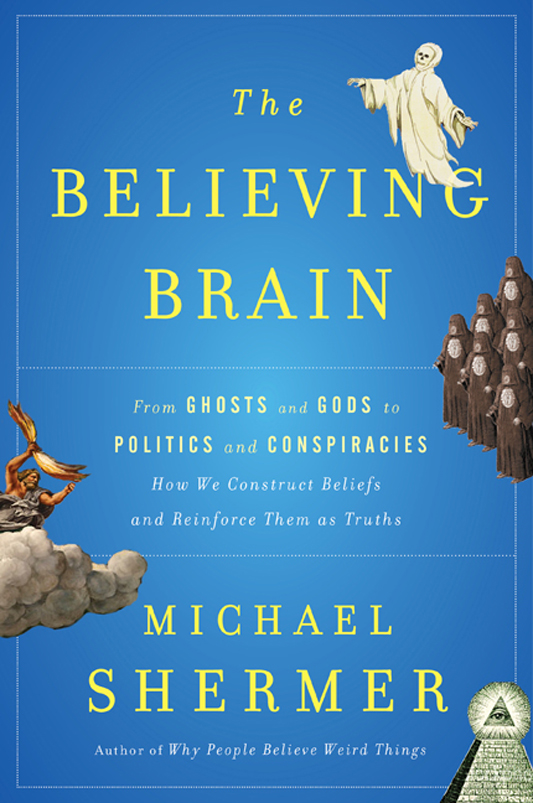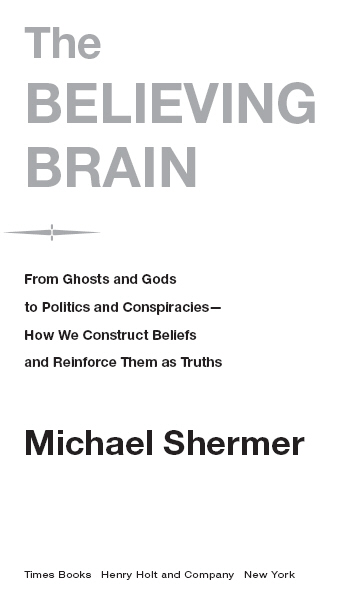
To Devin Ziel Shermer
For our small contribution6,895 days or 18.9 years from birth to independenceto the metaphorically miraculous 3.5-billion-year continuity of life on Earth from one generation to the next, unbroken over the eons, glorious in its contiguity, spiritual in its contemplation. The mantle is now yours.
For the mind of man is far from the nature of a clear and equal glass, wherein the beams of things should reflect according to their true incidence; nay, it is rather like an enchanted glass, full of superstition and imposture, if it be not delivered and reduced.
F RANCIS B ACON , Novum Organum, 1620
Contents
Prologue
I Want to Believe
The 1990s ber conspiracy-theory television series The X-Files was a decade-defining and culture-reflecting mosh pit of UFOs, extraterrestrials, psychics, demons, monsters, mutants, shape-shifters, serial killers, paranormal phenomena, urban legends turned real, corporate cabals and government cover-ups, and leakages that included a Deep Throatlike cigarette smoking man character played, ironically, by real-life skeptic William B. Davis. Gillian Andersons skeptical FBI agent Dana Scully played off David Duchovnys believing character Fox Mulder, whose slogans became posterized pop-culture catchphrases: I want to believe and The truth is out there.
As the shows creator-producer Chris Carter developed the series narrative arc, Scully and Mulder came to symbolize skeptics and believers in a psychological tug-of-war between reality and fantasy, fact and fiction, story and legend. So popular was The X-Files that it was parodied in a 1997 episode of The Simpsons entitled The Springfield Files, in which Homer has an alien encounter in the woods after imbibing ten bottles of Red Tick Beer. The producers ingeniously employed Leonard Nimoy to voice the intro as he once did for his post-Spock run on the television mystery series In Search of , a 1970s nonfiction version of The X-Files . Nimoy: The following tale of alien encounters is true. And by true, I mean false. Its all lies. But theyre entertaining lies, and in the end isnt that the real truth? The answer is no.
No squared. The postmodernist belief in the relativism of truth, coupled with the clicker culture of mass media, in which attention spans are measured in New York minutes, leaves us with a bewildering array of truth claims packaged in infotainment units. It must be trueI saw it on television, the movies, the Internet. The Twilight Zone , The Outer Limits , Thats Incredible! , The Sixth Sense , Poltergeist , Loose Change , Zeitgeist: The Movie . Mysteries, magic, myths, and monsters. The occult and the supernatural. Conspiracies and cabals. The face on Mars and aliens on Earth. Bigfoot and Loch Ness. ESP and psi. UFOs and ETIs. OBEs and NDEs. JFK, RFK, and MLK Jr.alphabet conspiracies. Altered states and hypnotic regression. Remote viewing and astroprojection. Ouija boards and tarot cards. Astrology and palm reading. Acupuncture and chiropractic. Repressed memories and false memories. Talking to the dead and listening to your inner child. Its all an obfuscating amalgam of theory and conjecture, reality and fantasy, nonfiction and science fiction. Cue dramatic music. Darken the backdrop. Cast a shaft of light across the hosts face. Trust no one. The truth is out there. I want to believe .
I believe that the truth is out there but that it is rarely obvious and almost never foolproof. What I want to believe based on emotions and what I should believe based on evidence do not always coincide. Im a skeptic not because I do not want to believe, but because I want to know . How can we tell the difference between what we would like to be true and what is actually true?
The answer is science. We live in the Age of Science, in which beliefs are supposed to be grounded in rock-solid evidence and empirical data. Why, then, do so many people believe in what most scientists would consider to be the unbelievable?
The Demographics of Belief
In a 2009 Harris Poll of 2,303 adult Americans, people were asked to indicate for each [category below] if you believe in it, or not. The results were revealing.
God | 82 % |
Miracles | 76 % |
Heaven | 75 % |
Jesus is God or the Son of God | 73 % |
Angels | 72 % |
Survival of the soul after death | 71 % |
The resurrection of Jesus Christ | 70 % |
Hell | 61 % |
The virgin birth (of Jesus) | 61 % |
The devil | 60 % |
Darwins theory of evolution | 45 % |
Ghosts | 42 % |
Creationism | 40 % |
UFOs | 32 % |
Astrology | 26 % |
Witches | 23 % |
Reincarnation | 20 % |
More people believe in angels and the devil than believe in the theory of evolution. Disturbing. And yet, such results do not surprise me, as they match findings in similar surveys conducted over the past several decades,
Although the specific percentages of belief in the supernatural and the paranormal across countries and decades vary slightly, the numbers remain fairly consistent: a majority of people hold some form of paranormal or supernatural belief.
I, too, would like to lay the blame at the feet of the media, because the fix then seems straightforwardjust improve how we communicate science. But thats too easy, and it isnt even supported by the NSFs own data. Although belief in extrasensory perception (ESP) decreased from 65 percent among high school graduates to 60 percent among college graduates, and belief in magnetic therapy dropped from 71 percent among high school graduates to 55 percent among college graduates, that still leaves more than half of educated people fully endorsing such claims! And for embracing alternative medicine (a form of pseudoscience), the percentages actually increased , from 89 percent for high school grads to 92 percent for college grads.
Part of the problem may be that 70 percent of Americans still do not understand the scientific process, defined in the NSF study as grasping probability, the experimental method, and hypothesis testing. So one solution here is teaching how science works in addition to what science knows . A 2002 article in Skeptic magazine entitled Science Education Is No Guarantee of Skepticism presented the results of a study that found no correlation between science knowledge (facts about the world) and paranormal beliefs. Students that scored well on these [science knowledge] tests were no more or less skeptical of pseudoscientific claims than students that scored very poorly, the authors concluded. Apparently, the students were not able to apply their scientific knowledge to evaluate these pseudoscientific claims. We suggest that this inability stems in part from the way that science is traditionally presented to students: Students are taught what to think but not how to think. The scientific method is a teachable concept, as evidenced in the previously referenced NSF study, which found that 53 percent of Americans with a high level of science education (nine or more high school and college science/math courses) understand the scientific process, compared to 38 percent with a middle level (six to eight such courses) of science education, and 17 percent with a low level (less than five such courses) of science education. So maybe the key to attenuating superstition and belief in the supernatural is in teaching how science works, not just what science has discovered.


